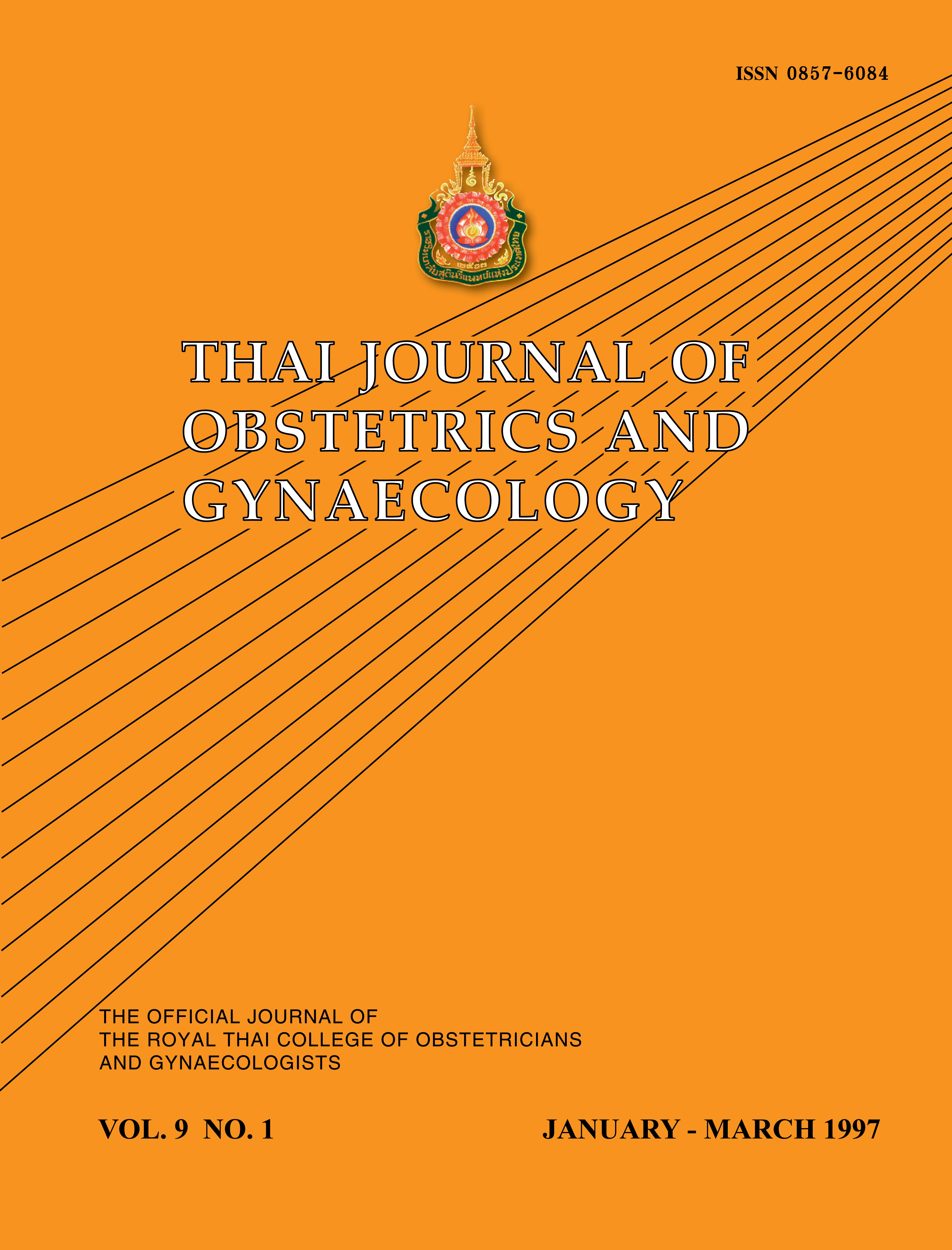Fetal Heart Rate Accelerations at Gestational Age 28-41 Weeks
Main Article Content
Abstract
Objective To study the pattern of fetal heart rate accelerations at gestational ages between 28-41 weeks and to compare the accuracy of nonstress tests (NST) as evaluated by different criteria for reactive tests at gestational ages of 28-31, 32-36 and 37-41 weeks, respectively.
Main outcome measures Means of fetal heart rate acceleration, proportion of reactive NSTs. “Type l" and "type ll” accelerations were defined as a fetal heart rate ; acceleration of 210 bpm above baseline for 210 seconds and of 215 bpm for 215 seconds, respectively. An NST was considered "reactive” if there were at least two accelerations in 20 minutes.
Results One hundred and twelve normal pregnant women were recruited and divided into three groups according to their gestational age : 44, 35 and 33 cases in group 1 (28-31 weeks), group 2 (32-36 weeks) and group 3 (37-41 weeks), respectively. The mean number and standard deviation of type I accelerations were 11.2 + 5.8, 12.4 + 6.4 and 9.3 + 5.5 in groups 1, 2 and 3, respectively. The mean number and standard deviation of type II accelerations were 5.4 + 4.0, 7.5 + 4.8 and 5.8 + 4.1 in groups 1, 2 and 3, respectively. Proportion of reactive NSTs (type I acceleration) : group 1:100%, group 2:97.1%, group 3:93.9%. Proportion of reactive NSTs (type II acceleration): group 1: 90.9%, group 2:91.4%, group 3: 81.8%. Means of accelerations and the proportions of reactive NSTs for either criteria were not statistically significant different between the groups.
Conclusion The patterns of fetal heart rate accelerations at gestational ages of 28-31, 32-36 and 37-41 weeks were similar. NSTs were reactive in 81.8 -100% of the cases.
Article Details

This work is licensed under a Creative Commons Attribution-NonCommercial-NoDerivatives 4.0 International License.


